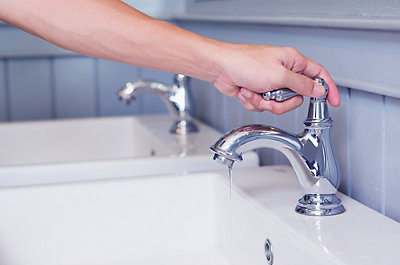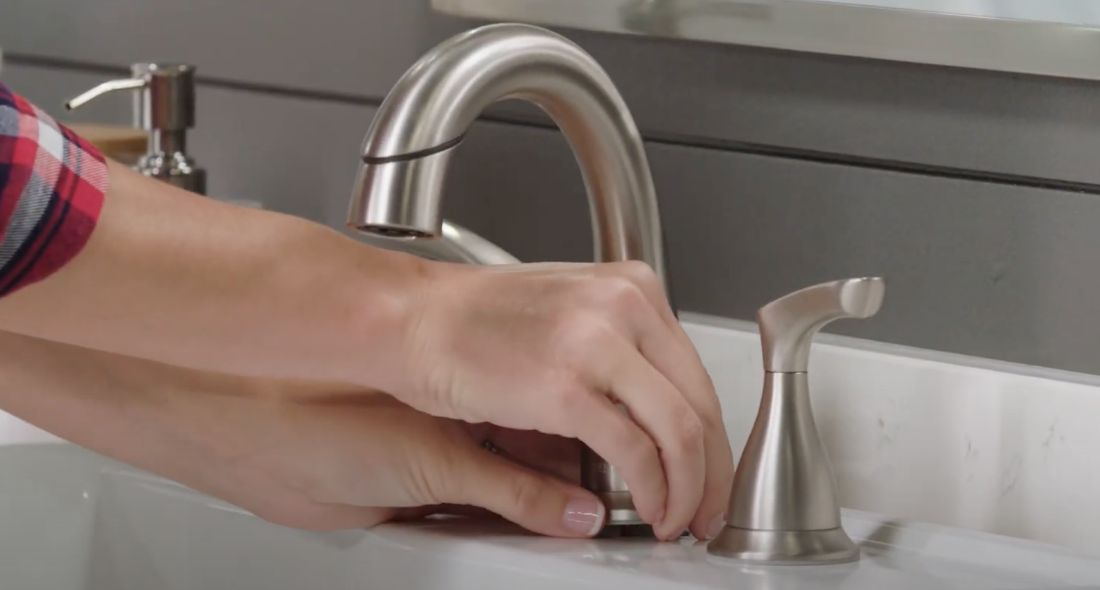An Upsides of Resolving a Malfunctioning Faucet
An Upsides of Resolving a Malfunctioning Faucet
Blog Article
What are your opinions about Why It's Important to Fix Leaky Faucets?

Dripping faucets may appear like a small trouble, however their effect goes beyond just the aggravation of the audio. From drainage to incurring unnecessary economic costs and wellness dangers, disregarding a dripping tap can result in various consequences. In this article, we'll delve into why it's essential to resolve this common house problem quickly and effectively.
Wastefulness of Water
Environmental Effect
Dripping taps add considerably to water wastefulness. According to the Epa (EPA), a solitary tap dripping at one drip per second can throw away more than 3,000 gallons of water each year. This not only stress water sources but likewise impacts ecosystems and wildlife depending on them.
Financial Prices
Enhanced Water Costs
Beyond the environmental effect, leaking taps can blow up water costs substantially. The collected waste over time converts right into higher utility costs, which might have been prevented with timely repair work.
Prospective Property Damages
In addition, prolonged leaking can result in harm to fixtures and surfaces bordering the faucet. Water buildup can create discoloration, deterioration, and also structural concerns if left neglected, leading to additional repair service costs.
Wellness Problems
Mold And Mildew and Mold Development
The consistent existence of moisture from a dripping tap develops an excellent setting for mold and mildew and mold development. These fungi not only endanger interior air high quality however also posture health dangers, especially for individuals with respiratory system problems or allergic reactions.
Waterborne Illness
Stagnant water in trickling faucets can come to be a breeding ground for bacteria and various other pathogens, raising the risk of waterborne illness. Contaminants such as Legionella microorganisms flourish in stationary water, possibly leading to severe diseases when consumed or inhaled.
Do it yourself vs. Professional Repair
Pros and Cons of Do It Yourself Fixing
While some may try to fix a dripping tap themselves, DIY repair work feature their very own set of challenges. Without correct understanding and tools, do it yourself attempts can aggravate the issue or result in incomplete repair services, prolonging the issue.
Benefits of Hiring a Professional Plumber
Employing a professional plumber makes certain that the underlying reason for the trickling faucet is attended to properly. Plumbings have the knowledge and tools to diagnose and repair faucet problems successfully, conserving time and minimizing the risk of additional damage.
Step-by-Step Guide to Taking Care Of a Dripping Tap
Devices Called for
Before attempting to fix a dripping faucet, collect the necessary devices, including a flexible wrench, screwdrivers, replacement components (such as washing machines or cartridges), and plumber's tape.
Common Tap Issues and Their Solutions
Recognize the kind of faucet and the specific concern triggering the drip. Typical problems consist of worn-out washers, rusty shutoff seats, or malfunctioning O-rings. Refer to supplier directions or online tutorials for detailed assistance on repairs.
Safety nets
Regular Upkeep Tips
To prevent trickling faucets, execute routine upkeep such as cleaning aerators, evaluating for leaks, and replacing damaged parts immediately. In addition, take into consideration mounting water-saving tools or updating to extra reliable components.
Value of Prompt Repair Works
Dealing with dripping faucets as quickly as they're seen stops additional water wastage and possible damage, inevitably conserving both water and cash over time.
Impact on Residential Property Value
Assumption of Well-Maintained Residential Property
Maintaining a residential or commercial property in good condition, consisting of dealing with upkeep issues like leaking faucets, improves its regarded value and worth among prospective customers or renters.
Impact on Resale Value
Features with well-maintained plumbing fixtures, consisting of taps, command higher resale values in the realty market. Resolving trickling faucets can contribute to a positive perception throughout property inspections and settlements.
Environmental Obligation
Private Contribution to Conservation
Taking obligation for repairing leaking faucets aligns with broader efforts towards water preservation and environmental sustainability. Every individual's activities collectively make a substantial effect on protecting precious resources.
Lasting Living Practices
By focusing on prompt repair services and taking on water-saving behaviors, people add to lasting living methods that benefit both present and future generations.
Conclusion
Dealing with a dripping tap surpasses simple ease; it's a vital action towards saving water, decreasing financial prices, and protecting wellness and property. Whether via DIY fixings or expert assistance, acting to fix leaking faucets is a little yet impactful way to promote liable stewardship of resources and add to a healthier, extra sustainable future.
How to Fix a Leaky Faucet: Step-by-Step Repair Guide
A leaky faucet may seem like a simple annoyance, but if it's not fixed promptly, that leak could cost hundreds to potentially thousands. From water damage to mold, mildew, and high water bills, even a tiny leak can be catastrophic if left unattended. Damage like this can even affect the overall value of your home, so it's important to take the right approach for leaky faucet repair. You may need the help of a plumber in some cases, but we've got a few tips you can try on how to fix a leaky faucet before calling the pros.
Four Faucet Types
When you're learning how to fix a leaky faucet, the first step is knowing what kind of faucet you're working with! There are four common types.
Cartridge Faucets
Cartridge faucets come in one- or two-handled varieties. In one-handled cartridge faucets, hot and cold water combines in a single cartridge. In the two-handled versions, hot and cold water are controlled separately and mixed in the faucet.
Ball Faucets
Ball faucets have a single lever you push up and down to adjust the pressure and rotate to change the temperature. A slotted metal ball controls the amount of water allowed into the spout.
Compression Washer Faucets
They're the oldest type of faucet, but they're still used in many homes — especially older ones. Compression faucets have two separate handles that, when turned, raise or lower the washer that seals a water valve. This valve stops water from flowing through the faucet when it is turned off.
Disc Faucets
Disc faucets rarely need to be repaired due to their maintenance-free design. The water flow is controlled by two discs — the upper one raises and lowers against a fixed lower disc, creating a watertight seal. If your disc faucet starts leaking, you may need to replace the seals or clean residue buildup from the inlets.
Fixing a Leaky Faucet
Step 1: Turn Off the Water
Whether you're learning how to fix a leaky bathtub faucet or how to fix a leaky kitchen faucet, always turn off the water supply to your working area when you're fixing a leak. The last thing you want is a flood added to your list of things to fix.
Look for the shutoff valves below your sink or around the tub and turn them clockwise to stop the water flow. If your faucet doesn't have shutoff valves, you may need to turn off the water for the whole house. Check to make sure it's off by turning the faucet on. If nothing comes out, you're ready to start the repair.
Step 2: Take Apart the Faucet
How you disassemble your faucet depends on the type of fixture you have. You can use a flathead screwdriver to remove the caps on top of the handle or handles for cartridge and compression faucets. Inside, you should see handle screws. Unscrew these with a screwdriver to remove the handle.
Disc- and ball-style faucets will typically have an inlet screw near the handle, and removing that will reveal the interior of the faucet.
Detach the Valve Stem
For cartridge- and compression-style faucets, you'll see the inner valve stem or cartridge once you remove the faucet handles. If you have a compression faucet, unscrew the brass valve stem. If you have a cartridge faucet, pull out the cartridge. If your cartridge has been in place for a while, it may require some tools or extra force to remove it due to mineral deposits.
Examine and Replace Parts
Once you've removed the parts, check them out to confirm what needs to be replaced. You may see corroded rubber washers, O-rings, stems, or cartridges. On a ball-style faucet, check the seats and springs for damage.
If you need to repair a leaky disc faucet, check the inlet and seals on the lower disc.
Once you determine what parts must be replaced, visit your local hardware store. Bring the damaged parts with you to ensure you can purchase the correct components to replace them.
Clean Valves and Faucet Cavity
If you've removed a stem or cartridge, you may notice mineral buildup in the faucet's threads. Use white vinegar to clean the valve seat by soaking it for a few minutes, then scrub it away with a soft toothbrush and rinse with warm water. You can also clean the interior of the faucet in the same way.
Reassemble the Faucet
Once your faucet is cleaned and the required parts have been replaced, it's time to reassemble it. Put the pieces back together and slowly turn the water supply back on. Doing this slowly is crucial because too much initial water pressure can damage the new hardware you've just installed.
https://homewarranty.firstam.com/blog/how-to-fix-leaky-faucet

As a serious person who reads on Why Are My Faucets Dripping (And Can I Fix It Myself)?, I was thinking sharing that piece was really helpful. In case you liked our article please do not forget to pass it around. I am grateful for being here. Revisit us soon.
Report this page